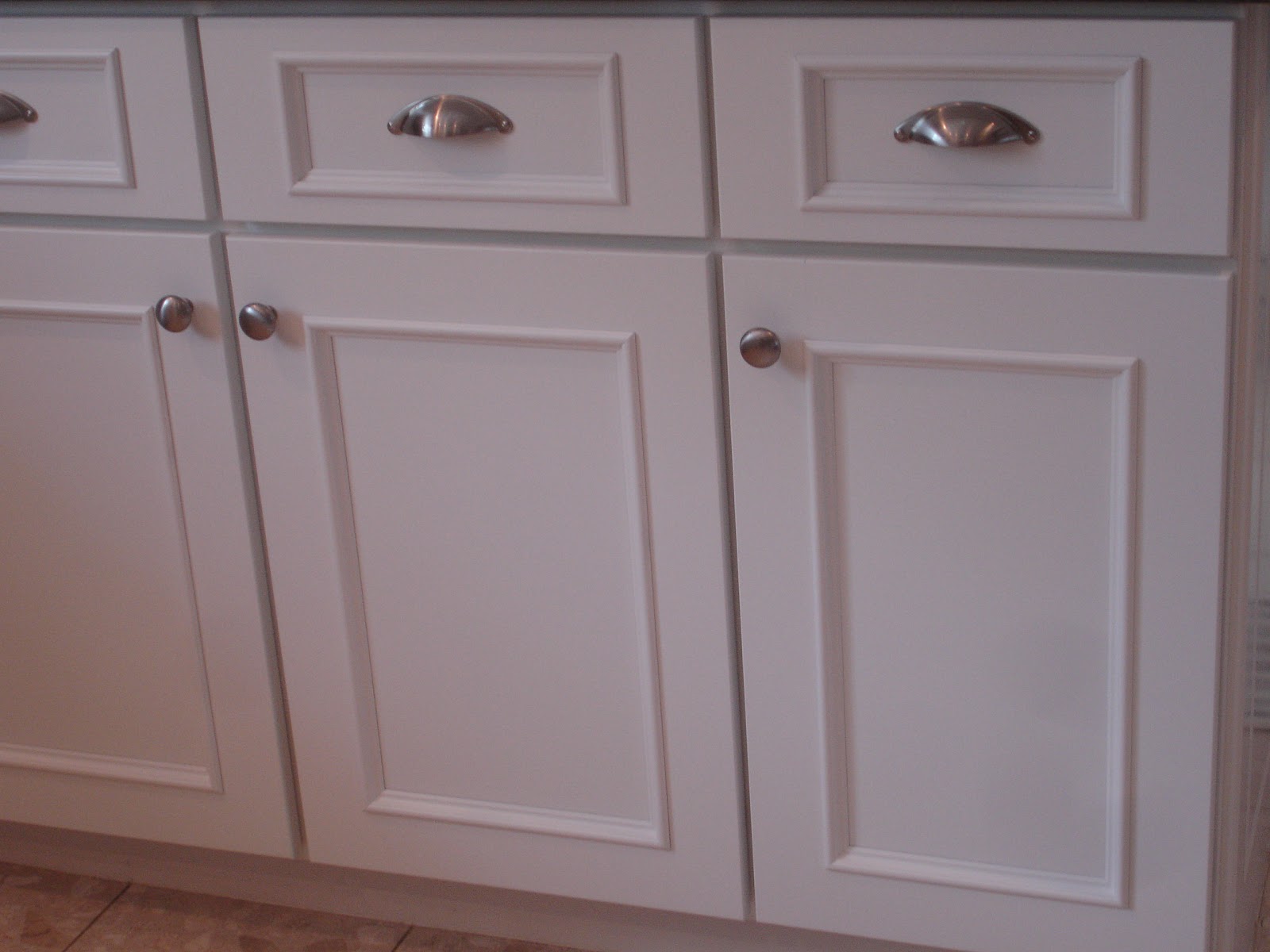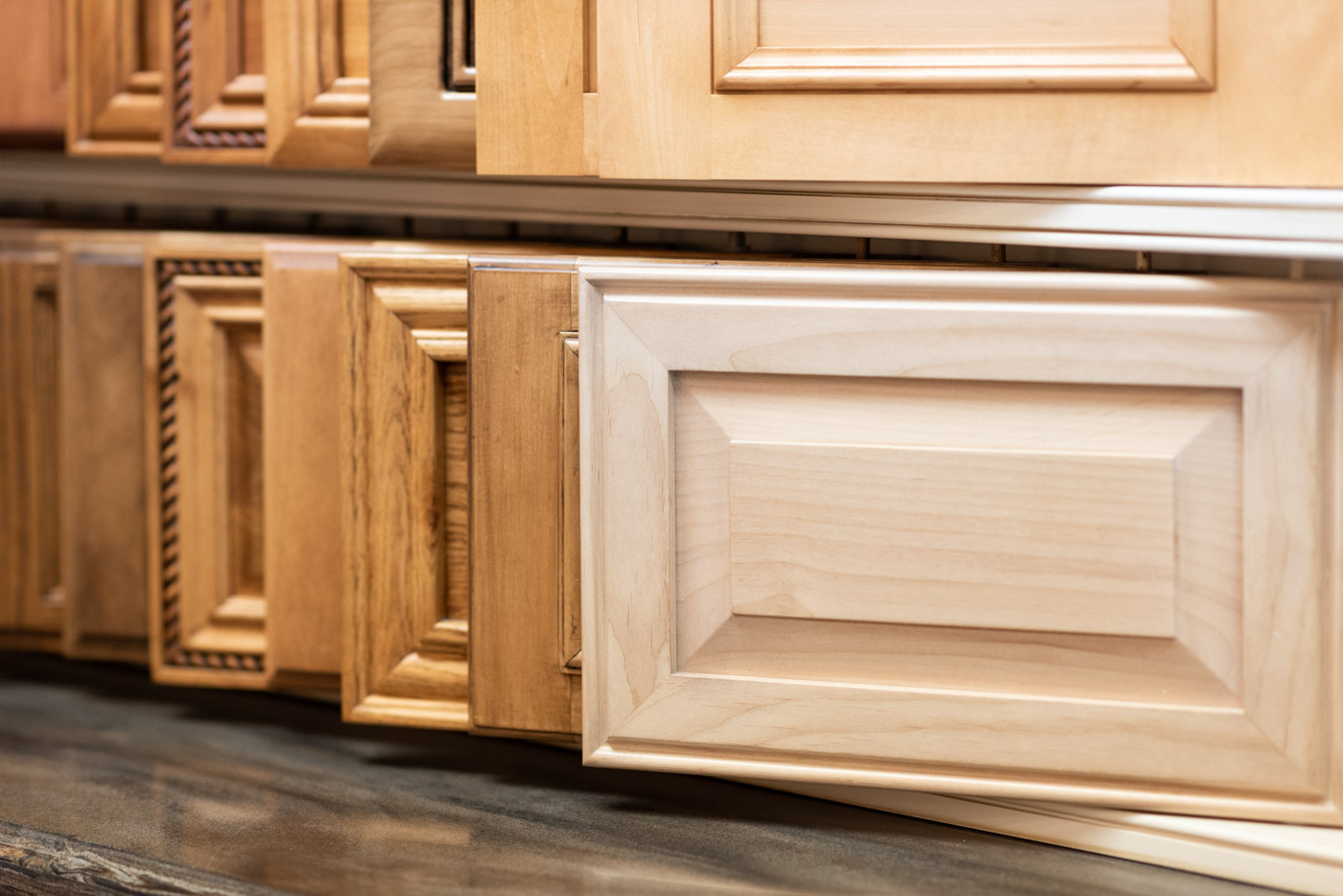Design Aspects of Beveled Shaker Cabinet Doors
Beveled shaker cabinet doors offer a unique blend of classic Shaker simplicity and modern sophistication. The subtle beveling adds depth and visual interest, elevating the overall aesthetic of any kitchen or bathroom design. This subtle detail transforms a simple, clean-lined door into something more dynamic and visually engaging.
Visual Appeal and Aesthetic Characteristics
The visual appeal of beveled shaker doors stems from the interplay of light and shadow created by the beveled edges. This subtle angle on the frame and panel creates a sense of depth and dimension that flat-panel doors lack. The clean lines of the Shaker style remain, but the bevel adds a touch of elegance and refinement, making them suitable for a wide range of design styles, from traditional to contemporary. The beveled edge softens the starkness of the frame, lending a more refined and less austere look compared to a standard Shaker door.
Comparison with Other Cabinet Door Styles, Beveled shaker cabinet doors
Beveled shaker doors offer a distinct visual profile compared to other styles. The following table highlights key differences:
| Feature | Beveled Shaker | Flat Panel | Raised Panel |
|---|---|---|---|
| Style | Simple, clean lines with beveled edges for depth | Simple, flat surface | Raised center panel, often with molding |
| Light Reflection | More complex, with highlights and shadows | Uniform reflection | Variable reflection depending on panel profile |
| Visual Weight | Medium; less heavy than raised panel, more substantial than flat panel | Light | Heavy |
Wood Types and Their Impact
The choice of wood significantly influences the final appearance of beveled shaker doors. Hardwoods like cherry, maple, and oak offer durability and a rich grain pattern that can be enhanced or subtly showcased through staining or painting. Cherry offers warm reddish-brown tones that darken with age, while maple provides a clean, lighter look, readily accepting various stains and paints. Oak, with its prominent grain, provides a more rustic and substantial feel. Softer woods like poplar or pine are more affordable options, often used when painted, as their grain is less visually prominent. The wood’s natural color and grain pattern will influence the overall look and feel, even after painting.
Effect of Paint Colors and Finishes
Paint color and finish are crucial in determining the final aesthetic. The beveled edges can be highlighted or subtly integrated depending on the chosen color and finish.
Beveled shaker cabinet doors – Here are three distinct color palettes and their effects:
- Classic White: A crisp white paint with a satin or semi-gloss finish accentuates the clean lines and creates a bright, airy feel. The bevels subtly catch the light, adding a touch of elegance without overwhelming the space.
- Warm Neutrals: Soft greige or beige tones with a matte finish create a calming and sophisticated atmosphere. These colors allow the wood grain to subtly show through, adding warmth and texture. The bevels add a sense of depth without being overly dramatic.
- Bold Jewel Tones: Deep blues, greens, or grays with a high-gloss finish create a dramatic and modern statement. The high-gloss finish emphasizes the beveled edges, making them a focal point. The rich color creates a luxurious and sophisticated look.
Manufacturing and Construction of Beveled Shaker Cabinet Doors

Creating beautiful and durable beveled shaker cabinet doors involves a precise process, blending traditional craftsmanship with modern manufacturing techniques. From the initial design to the final finish, each step contributes to the overall quality and aesthetic appeal of these popular cabinet doors. This section will delve into the specifics of manufacturing and construction, covering everything from the creation of the bevel to the installation of the finished product.
Bevel Creation Techniques
The defining characteristic of a beveled shaker door is, of course, the bevel. This subtle yet impactful detail is achieved through a variety of methods. The most common technique involves using a router equipped with a special beveling bit. This bit creates a consistent, precise bevel along the edges of the door frame. The router’s speed and the bit’s angle are crucial for achieving the desired look. For larger production runs, CNC machining offers superior precision and efficiency, allowing for complex bevel profiles to be created with minimal effort. Regardless of the method, careful attention to detail is essential to ensure a clean, uniform bevel across all doors. A skilled craftsman might also use hand planes for a more rustic, hand-hewn look. The choice of method often depends on the scale of production and the desired aesthetic.
Solid Wood vs. Wood Veneer Construction
Solid wood and wood veneer construction methods offer distinct advantages and disadvantages when crafting beveled shaker cabinet doors. Solid wood doors provide superior durability and a more substantial feel, showcasing the natural beauty of the wood grain. However, they are typically more expensive and susceptible to warping or cracking over time if not properly treated. Wood veneer doors, on the other hand, offer a more cost-effective alternative while still providing a visually appealing finish. Veneer doors are less prone to warping and cracking, and they can be engineered to be more dimensionally stable. The choice between solid wood and wood veneer depends on budget, desired durability, and the overall design aesthetic of the kitchen. For example, a high-end kitchen might opt for solid cherry or walnut, while a more budget-conscious project might utilize maple or oak veneer.
Step-by-Step Guide to Installing Beveled Shaker Cabinet Doors
Proper installation is crucial to ensure the longevity and aesthetic appeal of your beveled shaker cabinet doors. Following these steps will help you achieve a professional-looking installation.
Before beginning, gather the necessary tools: measuring tape, level, drill, screws, wood filler, sandpaper, and a screwdriver.
- Prepare the Cabinet Frame: Ensure the cabinet frame is properly leveled and square. Any imperfections in the frame will be reflected in the door installation.
- Precise Measurement: Carefully measure the cabinet opening to determine the exact size of the door needed. Accurate measurements are critical for a proper fit.
- Attach Hinges: Install hinges on the door and the cabinet frame, ensuring they are aligned perfectly. Use a level to verify proper alignment. Pre-drilling pilot holes is highly recommended to prevent splitting the wood.
- Door Installation: Carefully hang the door on the hinges. Make sure the door aligns properly with the cabinet frame and closes smoothly.
- Fill and Sand: Fill any gaps or imperfections with wood filler, allowing it to dry completely before sanding smooth.
- Final Adjustments: Make any necessary adjustments to ensure the door closes smoothly and aligns perfectly with the frame.
- Safety Precautions: Always wear safety glasses when using power tools. Use caution when handling sharp tools and ensure proper ventilation when working with finishes.
Applications and Considerations for Beveled Shaker Cabinet Doors
Beveled shaker cabinet doors, with their clean lines and subtle detailing, offer a versatile design element that complements a wide range of interior styles. Their popularity stems from their ability to blend seamlessly into both traditional and contemporary settings, making them a practical and aesthetically pleasing choice for various home renovation projects. Understanding their applications and considering several key factors before installation will ensure a successful and satisfying outcome.
Beveled Shaker Cabinet Doors in Different Room Styles
The timeless appeal of beveled shaker doors extends beyond the kitchen. Their adaptable nature makes them suitable for a variety of spaces. In kitchens, solid wood doors in warm finishes like cherry or maple create a classic, inviting atmosphere. A painted finish, perhaps a crisp white or a sophisticated gray, provides a more modern feel. Bathrooms benefit from the durability and moisture resistance offered by materials like solid wood with a waterproof sealant or high-quality MDF with a durable paint finish. Lighter colors and sleek hardware enhance the clean lines of the design. Even in living rooms, beveled shaker doors can be incorporated into custom built-in cabinetry, offering a cohesive and refined aesthetic. Here, richer wood tones or a painted finish that complements existing furniture can create a sophisticated and unified space.
Factors to Consider When Choosing Beveled Shaker Doors
Several crucial factors influence the decision-making process when selecting beveled shaker doors for a specific project. Budget is a primary concern; solid wood doors tend to be more expensive than MDF alternatives. The existing décor plays a significant role; the style and color of the doors should complement the overall design scheme of the room. The desired aesthetic dictates material and finish choices; a farmhouse kitchen might benefit from distressed wood, while a minimalist modern space might prefer sleek, painted doors. Finally, the functionality of the cabinets themselves needs consideration; the size and configuration of the doors must align with the intended use and storage requirements.
Beveled Shaker Doors in Different Kitchen Layouts
The suitability of beveled shaker doors varies slightly depending on the kitchen layout. In a galley kitchen, their clean lines help maintain a sense of spaciousness, especially when paired with light-colored finishes. An L-shaped kitchen allows for a more playful use of materials and finishes; one section of cabinets could feature a contrasting color or wood type to add visual interest without disrupting the overall cohesion. A U-shaped kitchen offers ample space to showcase the beauty of the beveled detail; a consistent finish across all cabinets creates a unified and elegant look. In each case, careful consideration of cabinet hardware and countertop choices further enhances the overall aesthetic impact of the beveled shaker doors.

